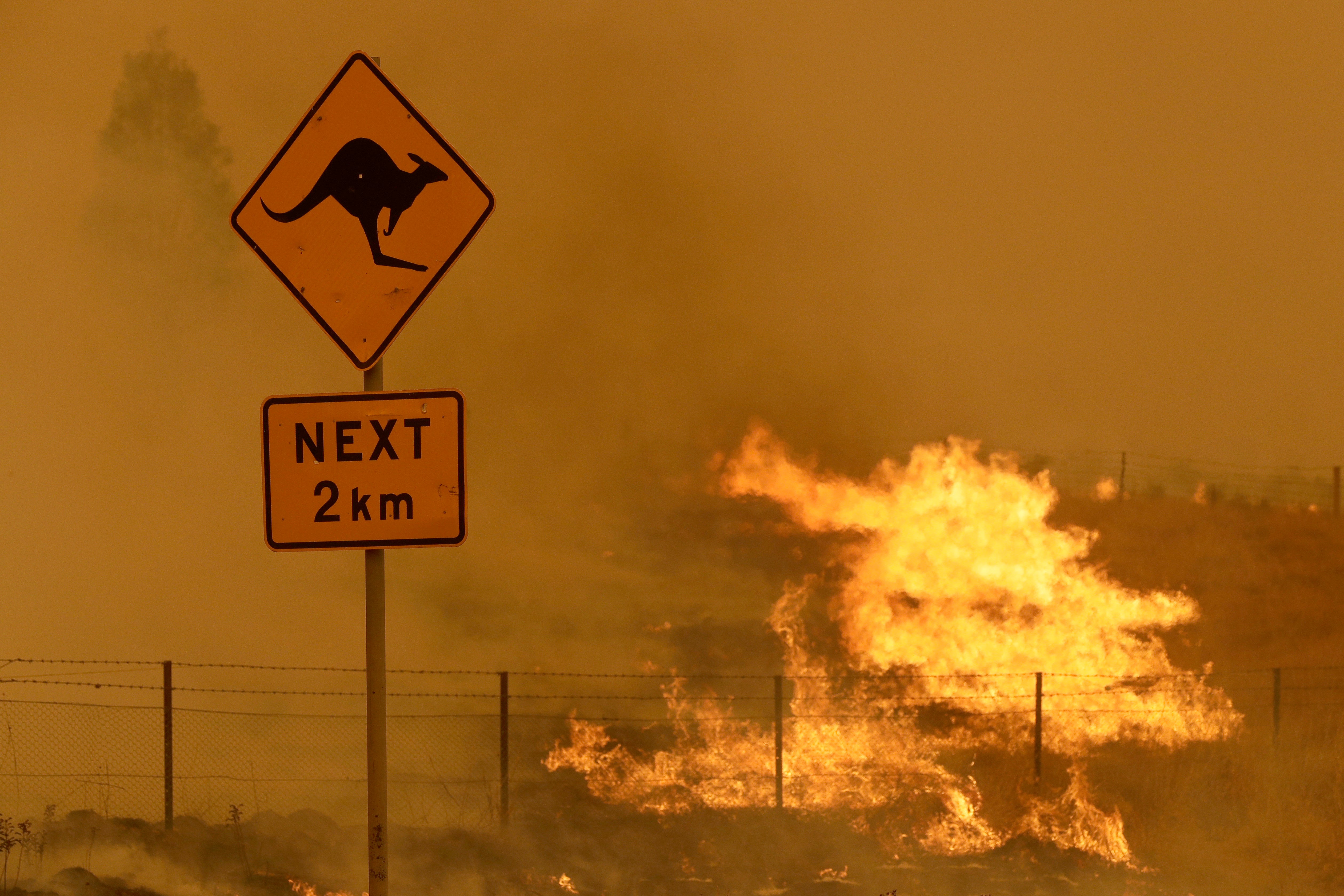Australia wildfires probe recommends climate risk forecasts
An investigation into Australia’s catastrophic wildfire season has recommended greater efforts to forecast the impacts of climate change on specific parts of the country, warning fire behavior was becoming more extreme

Your support helps us to tell the story
From reproductive rights to climate change to Big Tech, The Independent is on the ground when the story is developing. Whether it's investigating the financials of Elon Musk's pro-Trump PAC or producing our latest documentary, 'The A Word', which shines a light on the American women fighting for reproductive rights, we know how important it is to parse out the facts from the messaging.
At such a critical moment in US history, we need reporters on the ground. Your donation allows us to keep sending journalists to speak to both sides of the story.
The Independent is trusted by Americans across the entire political spectrum. And unlike many other quality news outlets, we choose not to lock Americans out of our reporting and analysis with paywalls. We believe quality journalism should be available to everyone, paid for by those who can afford it.
Your support makes all the difference.An investigation into Australia’s catastrophic wildfire season on Friday recommended greater efforts to forecast the impacts of climate change on specific parts of the country warning fire behavior was becoming more extreme.
The Royal Commission into National Natural Disaster Arrangements began in February while wildfires were ravaging vast swathes of the nation’s southeast in a fire season that is now known as Black Summer.
The fires killed at least 33 people including 10 firefighters, destroyed more than 3,000 hones, razed 19 million hectares (47 million acres) and displaced thousands of residents. One firefighter was killed when an extraordinary weather event described by authorities as a “fire tornado” flipped a 10-ton fire truck upside down.
The Royal Commission, which is the country’s highest form of investigation, said that smoke that blanketed much of Australia, including major cities, had contributed to hundreds of deaths.
The commission’s 578-page report, with 387 pages of appendices, made 80 recommendations, including for a greater harmonization of data across Australia on climate and disaster risks.
The report said federal and state governments should produce “downscaled” climate projections, and agree on climate trajectories and timelines. Discrepancies between states’ fire hazard mapping methods “make it difficult to measure risk at a national scale or to undertake comparative risk between regions.
“Improving weather forecasting and climate projection capability is important to improve the ability to predict or estimate the likelihood of extreme” wildfires, the report said, citing the Commonwealth Scientific and Industrial Research Organisation, an Australian government agency.
The role of climate change in the fire emergency was argued by lawmakers in the conservative government. Some blamed the scale of the disaster on arsonists.
The report found further global warming over the next 20 years “is inevitable.”
“Floods and bushfires are expected to become more frequent and intense,” the report said.
Emergency Management Minister David Littleproud described the recommendations as “very pragmatic.”
The report “goes into the next journey in this nation’s healing after one of the most significant natural disasters in our nation’s history,” Littleproud said.
The wildfire season has again opened in Australia. But unlike the last drought-parched season, above-average rainfall is forecast over eastern and northern Australia during the Southern Hemisphere summer. A more active tropical cyclone season is also forecast.